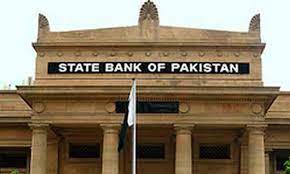The State Bank of Pakistan (SBP) has recently launched SBP’s Vision 2028, in a highly advertised ceremony held at SBP Headquarters Karachi. The SBP’s Vision 2028 is a strategic plan for the period 2023-2028, highlighting the central bank’s vision, mission and key objectives to be pursued over the next five years.
The Bank has developed a strategic plan through a consultative and inclusive process with key stakeholders. Speaking on the occasion, the Governor SBP claimed that SBP Vision 2028 represents its commitment to foster price and financial stability and to contribute to the sustainable economic development of the country.
According to him, evolving risks and challenges to the economy and financial stability, including climate change, rapid digital innovations and disruptions, and growing cyber security threats, have also been kept in perspective while developing the plan.
According to him, the SBP Vision 2028 revolves around six strategic goals that include reduction in inflation, enhancing effectiveness and stability of the financial system, promoting inclusive, transformation into a Shariah-compliant banking system, and conversion of the SBP into a high-tech, people-centric organization.
Historically, the State Bank of Pakistan (SBP) serves as the central bank of the country and plays a crucial role in the national economy.
The Bank makes an important contribution to shaping the Country’s economic outlook through regulating national monetary policy, currency issuance, supervision and monitoring of financial institutions to maintain a stable and sound financial system, foreign exchange management, and financial sector development along with providing financial support to banks or financial institutions facing liquidity crises to maintain stability in the financial system.
Over the decades, the State Bank has played a crucial role in ensuring price stability, fostering economic growth, and maintaining financial stability within the country, yet the body failed to introduce stringent economic and fiscal reforms in the South Asian nation that curb financial frauds, cartelization and manipulation of the government policies on the part of private businesses, banking and liquidity sectors.
At the same time, the Central Bank failed to assimilate modern technological innovations, in the fields of online trade, credit and blockchain industries, anti-money laundering regimes as well as funds monitoring and tax regulation in its nation.
Over the past years, Pakistan’s economic outlook has been long-suffering and volatile because of persistent stress on foreign reserves, depreciation of the Pak-rupee, high inflation, global energy crisis and unceasing political instability in the country.
The Country’s failure in economic micromanagement, lax control over the domestic market, effervescent local currency and non-persistent economic policies of the successive governments remained major challenges for the financial regulator throughout the past.
Presently, the SBP has designed a five-year strategy to upgrade its regulatory mechanisms, by embracing essential legislation, technological innovations, new global financial trends, productivity and competitiveness, financial resilience and modern techniques that have now become vital to compete with the fast-paced global financial market. The Central Bank has initiated a dearly needed reform/ transformation program that is a delayed endeavour, yet late coming is better than never.







